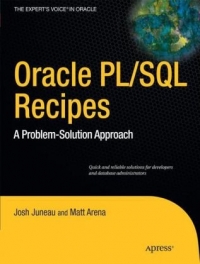
Oracle PL/SQL Recipes
A Problem-Solution Approach
Book Description
Oracle PL/SQL Recipes is your go to book for PL/SQL programming solutions. It takes a task-oriented approach to PL/SQL programming that lets you quickly look up a specific task and see the pattern for a solution. Then it's as simple as modifying the pattern for your specific application and implementing it. And you're done and home for dinner.
Oracle PL/SQL Recipes is another in Apress' ongoing series of recipe books aimed at Oracle practitioners. The recipe format is ideal for the busy professional who just needs to get the job done.
Book Details
- Publisher: Apress
- By: Josh Juneau, Matt Arena
- ISBN: 978-1-4302-3207-0
- Year: 2010
- Pages: 456
- Language: English
- File size: 6.2 MB
- File format: PDF
- Download:
本帖隐藏的内容
 Oracle PL-SQL Recipes.rar
(2.59 MB, 需要: 20 个论坛币)
本附件包括:
Oracle PL-SQL Recipes.rar
(2.59 MB, 需要: 20 个论坛币)
本附件包括:- Oracle PL-SQL Recipes.pdf





 雷达卡
雷达卡





 提升卡
提升卡 置顶卡
置顶卡 沉默卡
沉默卡 变色卡
变色卡 抢沙发
抢沙发 千斤顶
千斤顶 显身卡
显身卡






 京公网安备 11010802022788号
京公网安备 11010802022788号







